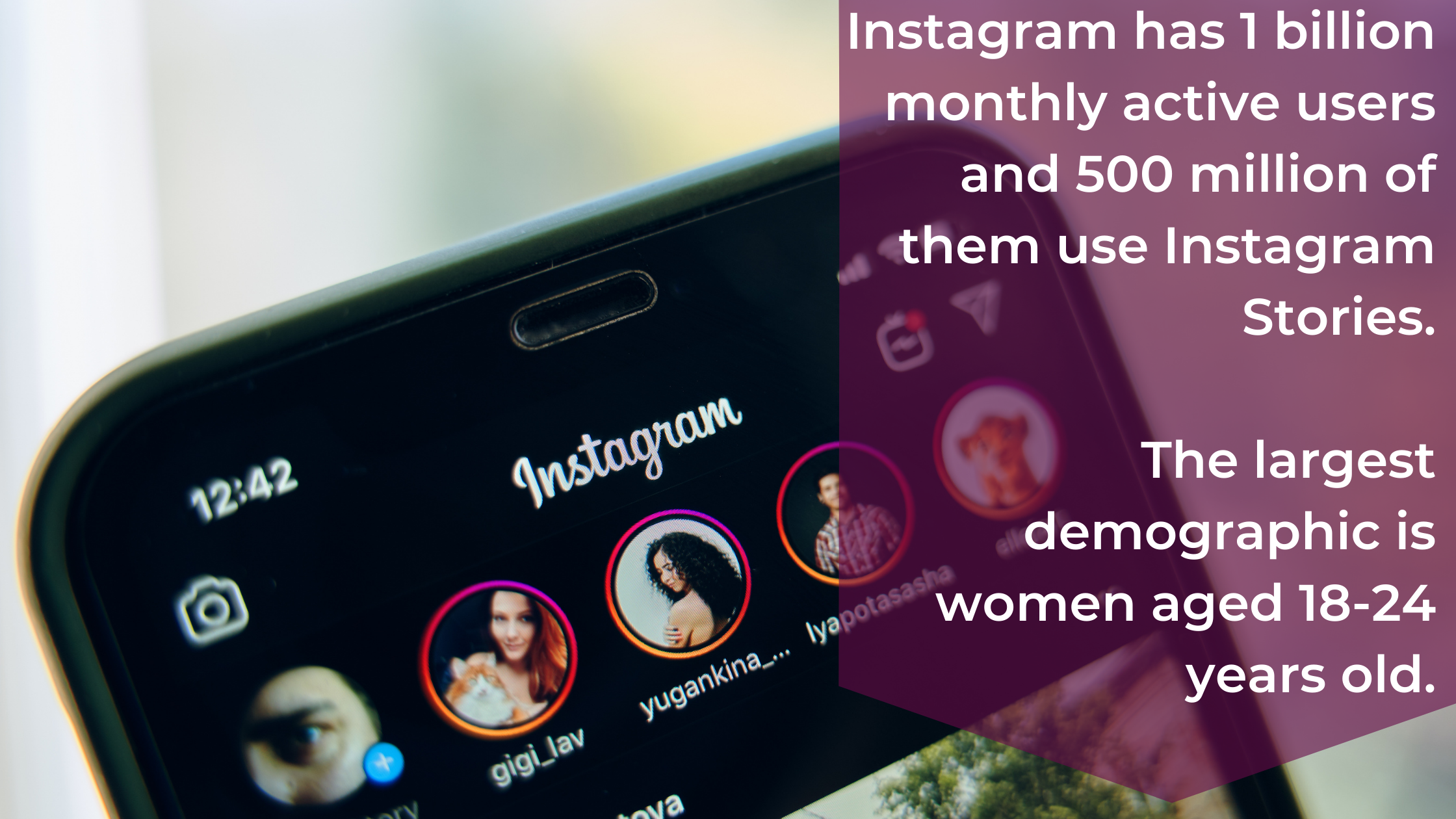
Subscribe to our newsletter!
We don't spam. You will only receive relevant and important tips for you and your business.
Unsubscribe anytime.
When social media is used correctly, it can be your company’s most profitable marketing channel. Social media offers a large return on investment (ROI) and is generally less expensive than other forms of digital marketing. It’s an excellent way to build brand awareness, connect with existing customers, and generate new leads to fill your sales funnel.

However, determining which social networks will give your business the highest ROI requires a bit of research. It’s vital to be strategic about which platforms you build a presence on. Not every social media platform is a good fit for every business, so you should invest your time in the platforms where you're most likely to reach and engage with your target audience.

The best approach is a combination of different social media channels. It’s essential to not only know the social networks available, but also how they function for different industries, audiences, and objectives.
Facebook is by far the largest platform, with over three billion monthly active users. Half of these users visit the site several times a day, and 75% visit on a daily basis. As a result, you can find just about anyone on Facebook, provided they have access to the Internet.
There’s no denying that Facebook is the best social media platform available to businesses today, especially for lead generation. It’s a good platform for building relationships and is best suited for businesses that are looking to grow brand awareness and show the faces behind the brand.

Facebook can be used to share photos and videos, run contests, ask and answer questions, or communicate business updates. Business pages also have a lot of customization options. You can highlight information such as your contact information, hours of operation, and products or services.
Twitter is an informal social network that is ideal for interacting with your followers. It’s also one of the only platforms where you don’t need visual content to stand out (but it does help).
Brands can use Twitter to build brand awareness and connect directly with customers. Twitter utilizes hashtags, which organize conversations around a word or phrase. As a business owner, hashtags allow you to participate in conversations about trending topics in your industry. By searching hashtags, you can learn what people are talking about and reach more users who might be interested in your content.
Many companies use this platform to handle customer service concerns. According to Jack Dorsey, the orginal founder of Twitter, companies that use Twitter for customer service are seeing a 19 percent increase in customer satisfaction. That could be due to many reasons, including the fact that Twitter allows businesses to have a public one-on-one interaction with a customer so that other customers can see issues being resolved in real-time. Also, there’s a big cost benefit to using Twitter. The average cost of a Twitter response is $1, versus the average cost of $6 to interact with a customer through a traditional call center.
While Twitter is great for short updates and engaging with followers, it isn't for every business. If you're a highly visual business or you don't have a strong brand voice, you may want to focus on another social network.
LinkedIn is a formal social networking site for professionals that has revolutionized the way we seek, find, and get hired for jobs. It's a great place to generate leads, position yourself as an industry leader, and promote your business.

In general, companies that seek businesses as clients (B2B) will have more success than companies that market directly to consumers (B2C). One of the best qualities of LinkedIn is that audiences on this social media platform are business-minded. This means that they are often open to networking opportunities, providing an excellent opportunity for brands that want to connect with decision-makers.
Small business owners are using LinkedIn to find new leads and identify commonalities, allowing them to contact “warm” leads instead of making cold calls. Instead of making cold calls, small business owners can use LinkedIn to find new leads, identify commonalities, and foster business relationships. This is called “social selling” and, according to LinkedIn, social selling leaders have 45 percent more sales opportunities per quarter.
LinkedIn’s newsfeed is not as competitive as the Facebook and Instagram algorithms, so businesses are able to reach more users. Content from Company Pages has a better chance of being seen on LinkedIn. According to Ogilvy, a LinkedIn status update typically reaches about 20 percent of your followers. In comparison, Facebook’s algorithm favors content from users, and posts from businesses reach about six percent of followers.
LinkedIn is ideal for reaching an affluent audience. About half of people making over $75,000/year use LinkedIn on a regular basis. In addition, about half of people with college degrees use LinkedIn on a regular basis.
A LinkedIn profile can benefit any type of business, but it can be most beneficial and worthwhile for businesses that want to connect with decision-makers from the B2B industry or those in industries in which networking is important. For example, a residential lawn care business probably won’t find many valuable connections on LinkedIn, but a lawn care business that wants to connect with city officials to sell municipal contracts will do well.
Instagram is the third most popular social network in the United States. The app is based entirely on photo and video posts, so it's best for businesses that have strong visual content to share.
Instagram is an excellent tool for lead generation. Businesses can use Instagram to share their products, values, and voice. Brands such as restaurants, hotels, travel, apparel, and design are best suited for this platform.

Instagram is made up of a younger demographic than Facebook or LinkedIn. This means that fewer users have a college education and most have a lower income compared to Facebook or LinkedIn.
From Instagram Live to Instagram Stories, there is no shortage of tools businesses can use to capture and engage their audience. These features allow you to provide behind-the-scenes footage and share important news and updates with your followers.
Snapchat is another mobile-only, visual platform that's best known for its disappearing content. Because posts are temporary, there is less pressure to create polished content. Users can send videos and photos to each other or post content to their public Stories, which disappear after 24 hours. The app has expanded to include chat, messaging, image storage, events, and media content.
This app was designed to be casual and fun. Showing the authentic side of your business will help to build loyal customers.
Use the app's Story feature to walk followers through business operations at your workplace. Make followers feel important by giving them a sneak, exclusive peak they can't see anywhere else on social media. Believe it or not, your customers are interested in seeing what happens behind the scenes.
Geofilters are graphic designed “overlays” or “frames” which appear to users depending on their specific location. Geofilters can be custom-created by businesses and are affordable, starting at around $5 for 20,000 square feet.
Inspire users to engage with your brand by bringing it to life through a sponsored lens. Lenses have special facial recognition technology to create unique AR experiences. If you own a coffee shop, it could be as simple as the filter allowing the user to virtually drink coffee.
Snapchat is best suited for businesses that market to Gen Z and millennial audiences. According to Social Pilot, 48% of Snapchat users are 15-25 year olds.
Pinterest is another visually-oriented platform, where users can save and display content by "pinning" digital boards, which can be organized by category. Most people use Pinterest to find inspiration or helpful content.

Pinterest is mostly used by women. In fact, there are three times more women on Pinterest than men. Popular categories include DIY projects, fashion, exercise, beauty, travel, photography, and food. High-quality, engaging images are a must when it comes to Pinterest.
Pinterest can be great for driving traffic to your site, but it’s better suited for some businesses than others. Home decor, landscaping, and photography are all examples of businesses that can thrive on this platform.
YouTube is a video-sharing platform that boasts two billion monthly users. It is the most widely used social network in the United States and the second-largest search engine behind Google.
People use YouTube for both entertainment and educational purposes. Businesses can post video tutorials, instructional videos, product reviews, or entertaining content to engage and educate users.
Perhaps the greatest perk of YouTube is that it allows brands to access an unlimited amount of video hosting for free. This makes it an affordable way for businesses to publish video content that can drive engagement and conversions.
Not only does YouTube allow you to reach viewers across the globe, but it can also help with your search engine optimization (SEO). YouTube is owned by Google, so the content that you post on YouTube will easily translate to search engines. This means that Google may serve your YouTube video in its search engine results pages (SERPs) for keywords that you are targeting.
To ensure that your videos are searchable on Google, make sure that they’re optimized for SEO. This includes a keyword-centric title and description, meta description, keyword tags, custom thumbnail images, captions, and call-to-action (usually a “Subscribe” button).
TikTok is the newest major social media network with more than 1 billion active monthly users. It is a mobile based short-form, video-sharing app. The most popular content on the app ranges from challenges and sketches to dances and duets. Other highly-viewed content includes fitness, education, travel, beauty, and food.
The largest demographic of TikTok users is between the ages of 16 and 24. Though it’s most popular among Gen Z, the demographic of users has grown among all generations. You can find everyone from influencers and teens to dentists and lawyers.
Due to its fast growth and rising popularity, many brands are now realizing the potential of TikTok as a marketing haven.
Perhaps the biggest benefit of using TikTok is the algorithm. TikTok is famous for curating personalized 'For You' feeds for each user. This means that, as a business, your videos will be shown to users who are most likely to engage with your content.
The algorithm recommends content by ranking videos based on a combination of factors:
The biggest benefit to small businesses is that you don’t need thousands of followers to go viral. TikTok explained that follower count isn’t a direct factor in the recommendation system. So, as long as you create good content, your videos have the potential to reach thousands or even millions of engaged users.
When it comes to the best social media platform, there’s no universal right answer. Choosing the right social media platforms for your business is all about determining your goals, discovering what platforms your target audience is on, and choosing a platform that aligns with your brand.
If you want to build brand awareness, make sure you aren’t wasting your time and money on a Snapchat account.
If you plan on curating written content, consider Facebook, Twitter, or LinkedIn. These platforms thrive off of shared articles. They include thumbnails, snippets, and other features to highlight blog posts even more.
Instagram and Snapchat are great for branding because users are highly engaged. Both of these mobile-first apps focus heavily on content and less on advertising.
In order to choose the best social media platforms for your business, you need to understand your customers. Specifically, you need to understand how they spend their time online.
If you do not already know this, then we recommend creating an audience persona. To develop a persona, you first need to establish their demographic status. This includes their age, gender, location, income, education, family, and interests. Further, you can develop values, goals, fears, and challenges to understand the needs of the consumer. This will help you develop a better understanding of how your audience uses the internet and what content they’re most interested in consuming. The more you understand your customers, the better you can select the best platforms to reach and engage with them.
Take into account your objectives and what platforms your audience is active on to determine which platforms will benefit your business.
Keep in mind that it takes a lot of time and effort to maintain each account. It’s not as simple as creating a profile and pressing “publish” on a post. In most cases, you will need to set aside a budget to promote your content. In addition, you’ll need to review Analytics to determine the ROI of your content.
Managing multiple social media profiles isn’t as simple as it seems. There’s more to it than finding an article and sharing it across every channel. In order to be successful, you need to provide a unique experience on each platform. You also have to engage on every platform. The moment you start to neglect your audience, you’ll lose their attention.
You should master the art of two or three social media platforms before you consider adding more to your strategy.
Once you’ve discovered the social media platforms that will benefit your business, you need to create a strategy for each.
Not every social network should be used in the same way. While a brand may use Facebook to develop awareness, its Instagram profile may be tailored toward selling products to current customers.
Your strategy should include your goals and objectives, a posting schedule, and an actionable growth plan.
From there, put your strategy into practice, measure your efforts, and track the results.
Need help developing your social media strategy?